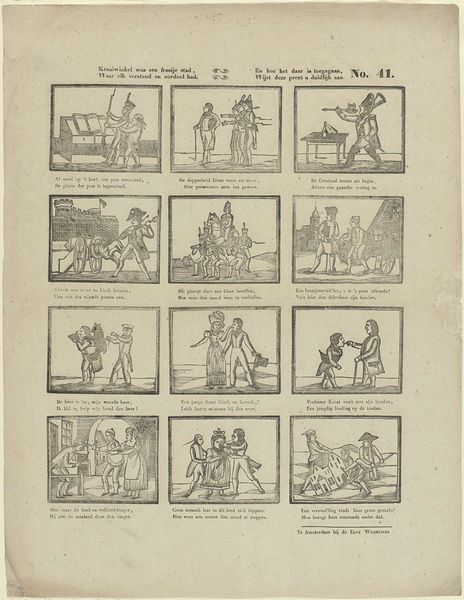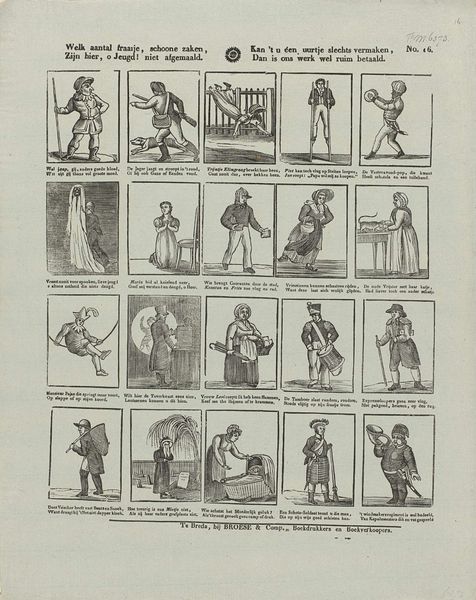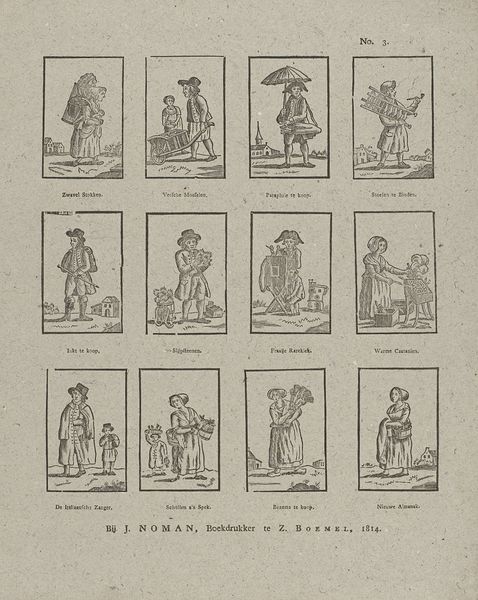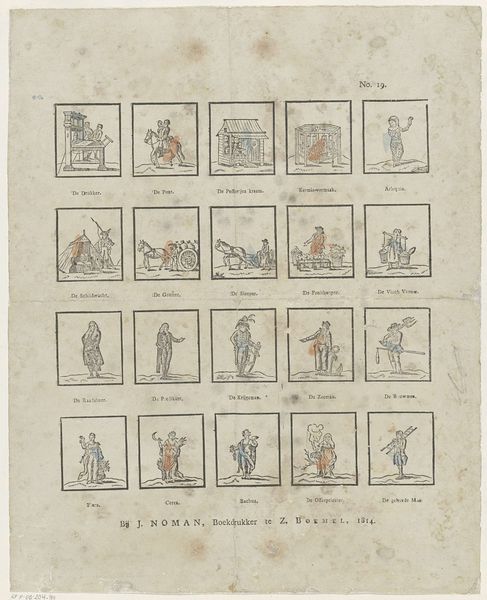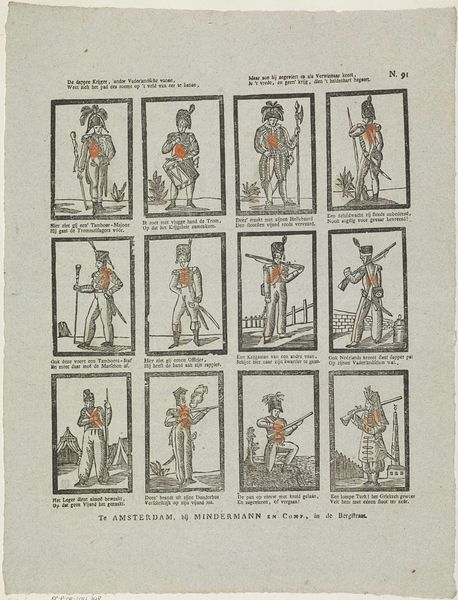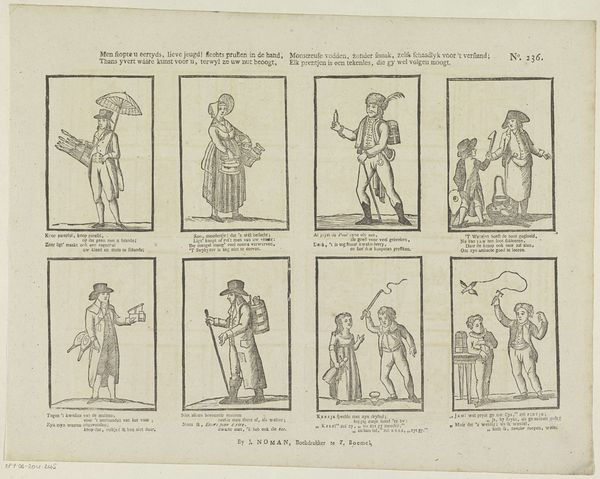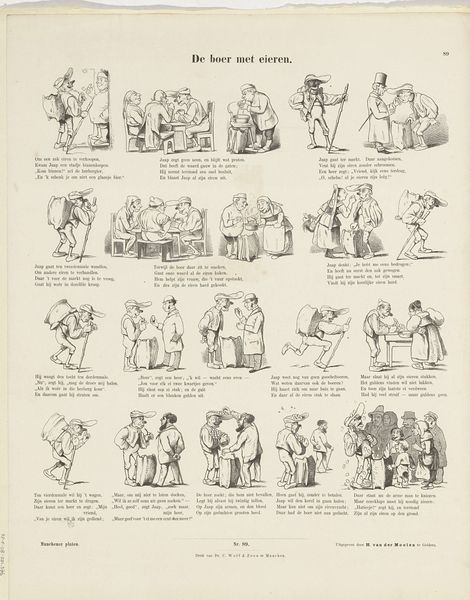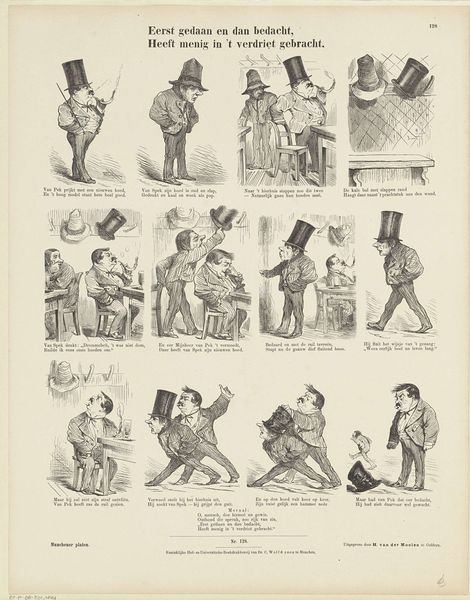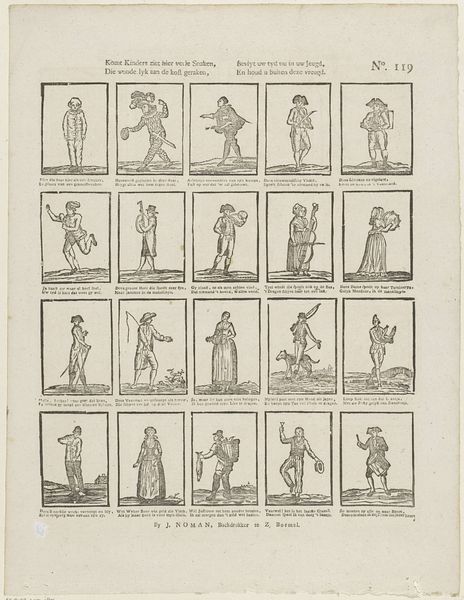
graphic-art, print
#
graphic-art
# print
#
genre-painting
Dimensions: height 329 mm, width 420 mm
Copyright: Rijks Museum: Open Domain
Curator: Here at the Rijksmuseum, we have a print entitled "Straatverkopers," or "Street Vendors" in English, created by Schalekamp and Van de Grampel around 1822 to 1849. It's an intriguing example of graphic art, with a clear theme of everyday life depicted. Editor: My first impression is one of ordered simplicity. Each small vignette captures a snippet of ordinary labor with a quaint aesthetic—although there's an underlying current of repetitive toil. What do you think the purpose of packaging them in a grid format like this? Curator: That's a great observation. Placing these individual street vendors in a grid not only speaks to the visual culture of the era, categorizing social roles, but also speaks to how prints were consumed. It could be from a series, perhaps educational, circulating archetypes throughout Dutch society. Editor: Absolutely, there’s a didactic aspect to it. Notice the dog alongside the chimney sweep in the first square? Each character feels meticulously placed. Also, given the period, I wonder about the social commentary on labor exploitation. The stark simplicity doesn't reveal if these vendors reap any tangible benefits, only the suggestion of routine struggles. Curator: Well, genre painting and prints like these do tend to romanticize labor, don't they? I wouldn't be surprised to see how they circulated in wealthier households and subtly reinforced class structures, especially in Amsterdam, with its burgeoning capitalist landscape. The accompanying text beneath each square solidifies these values through each occupation described, reinforcing its importance to viewers. Editor: True. We must look deeper than just appreciating it for historical aesthetics. This artwork might be hinting at something beyond simple depictions of profession: that it may be inadvertently legitimizing unfair economic disparities. Curator: Food for thought, certainly! Seeing how images shape social perception gives us unique opportunities to challenge our preconceived notions and see more in everyday historical ephemera. Editor: Precisely. Let us leave our listeners contemplating whether representation inherently implies endorsement and the responsibilities this burden places on creators—both then and now.
Comments
No comments
Be the first to comment and join the conversation on the ultimate creative platform.


